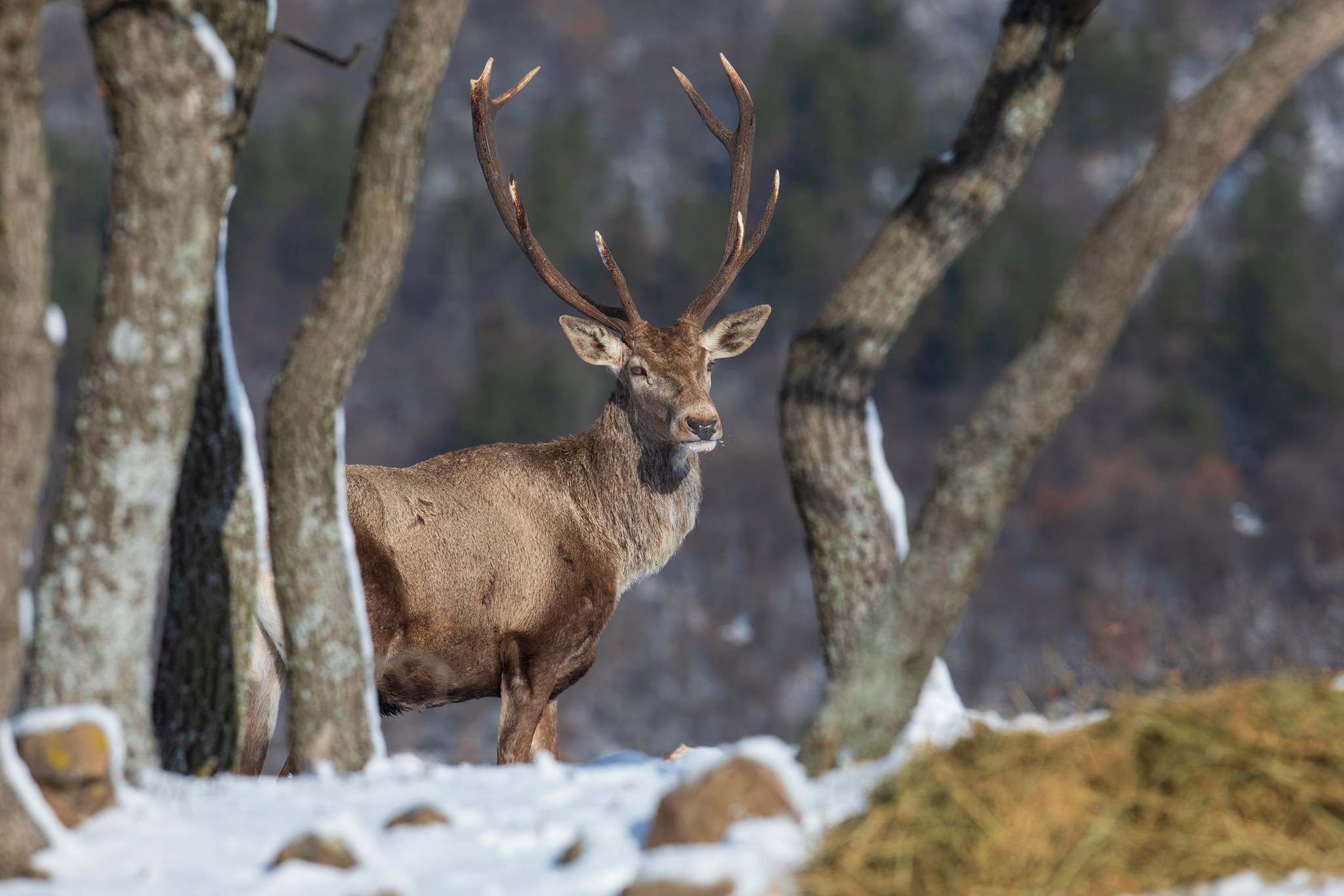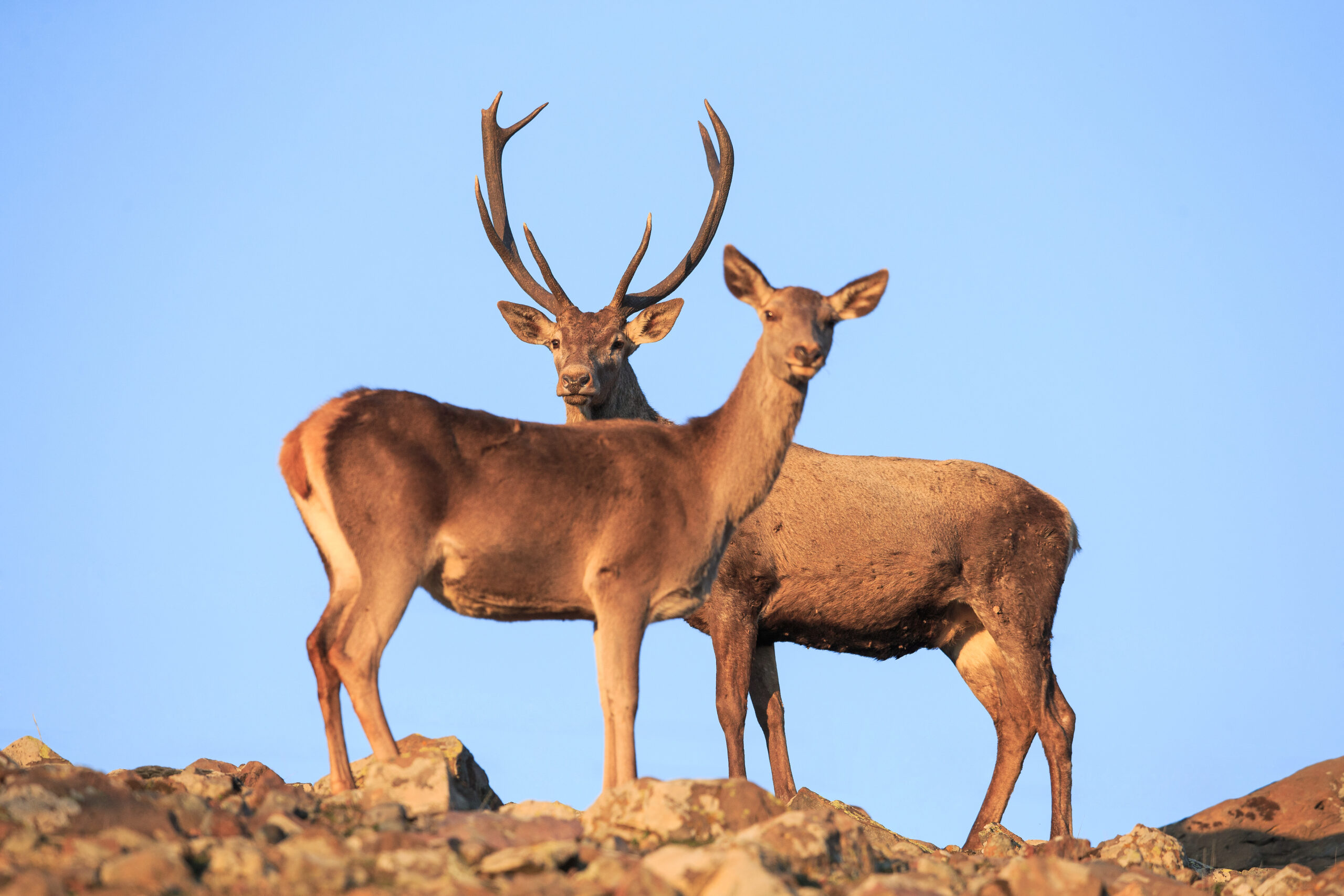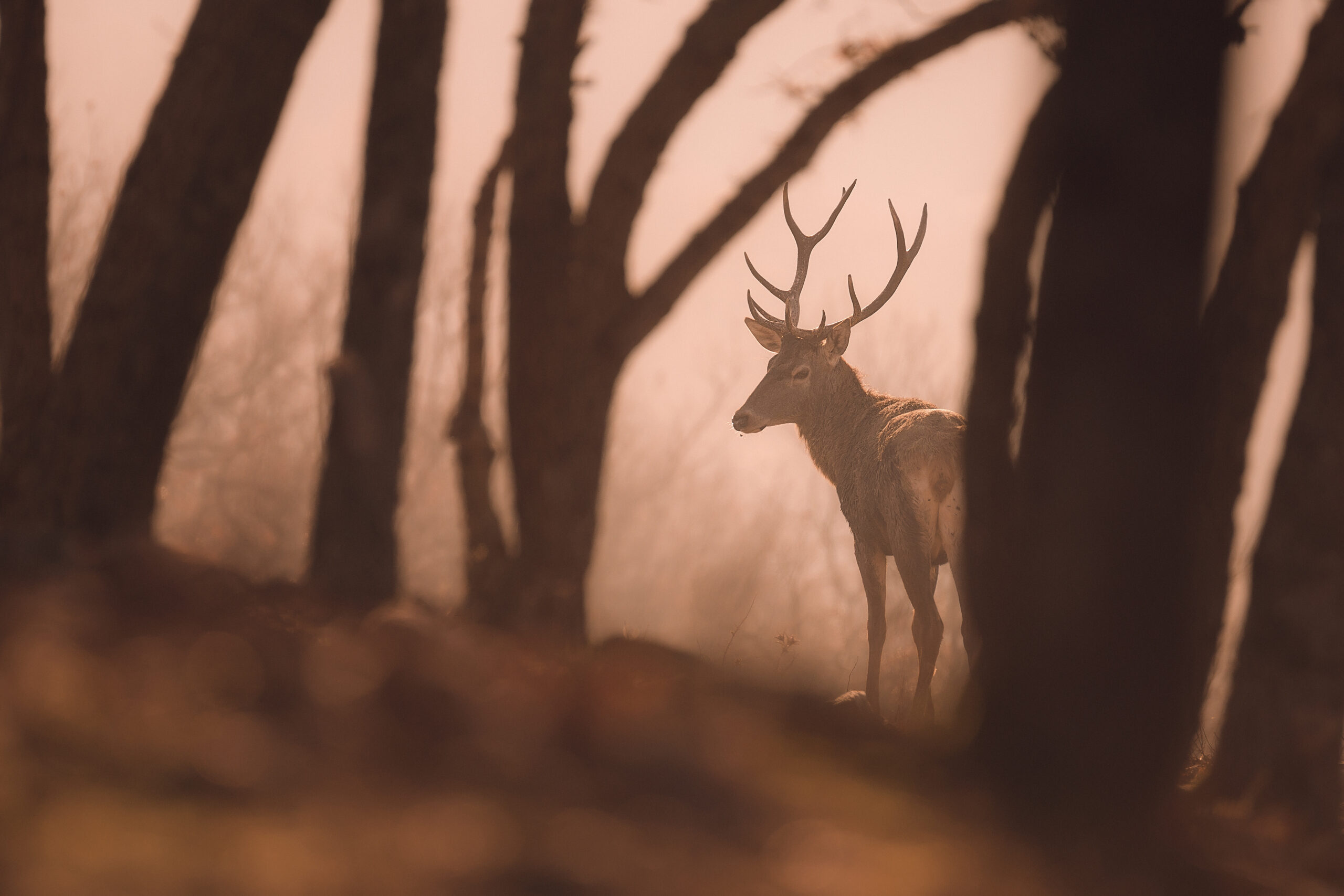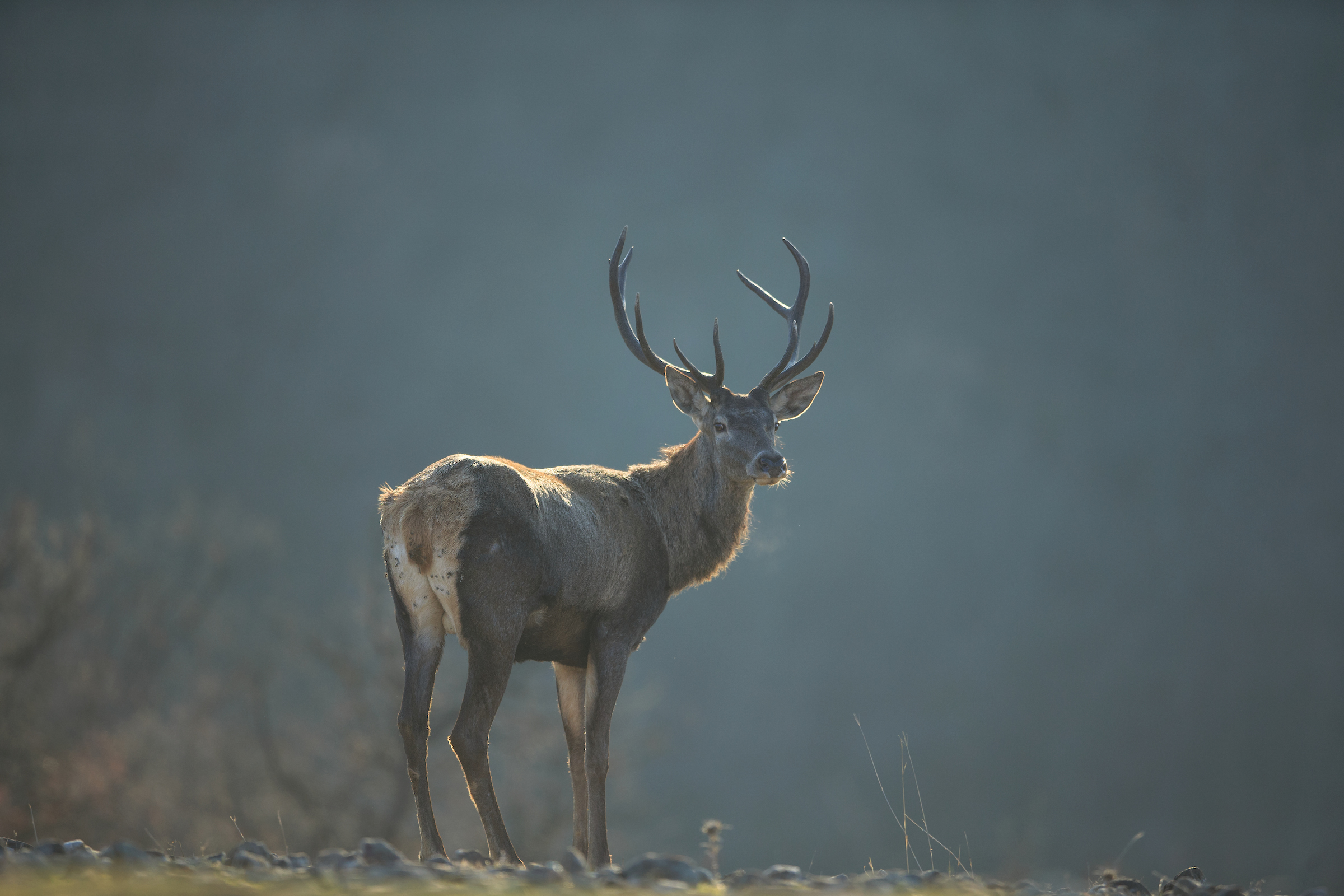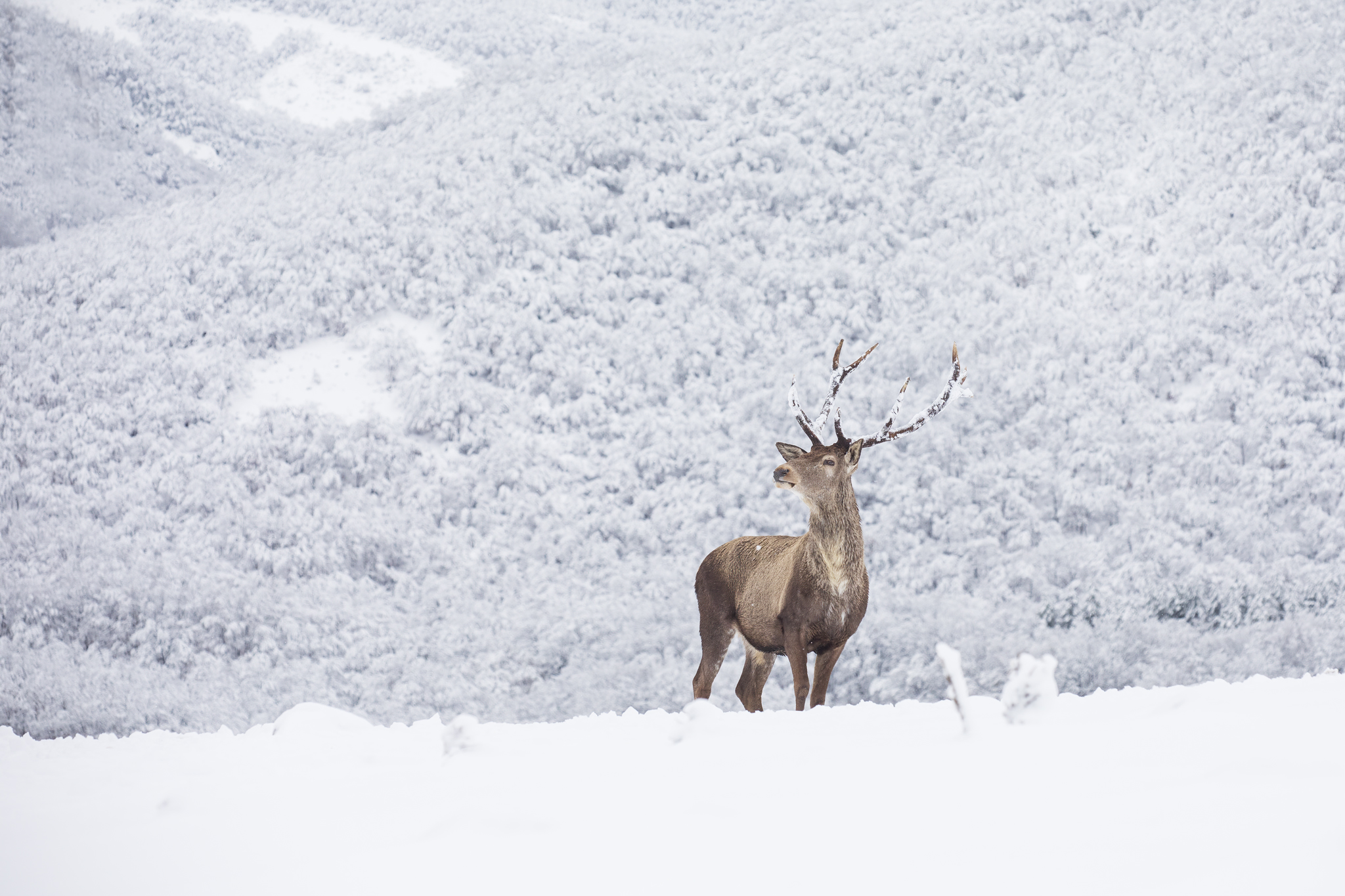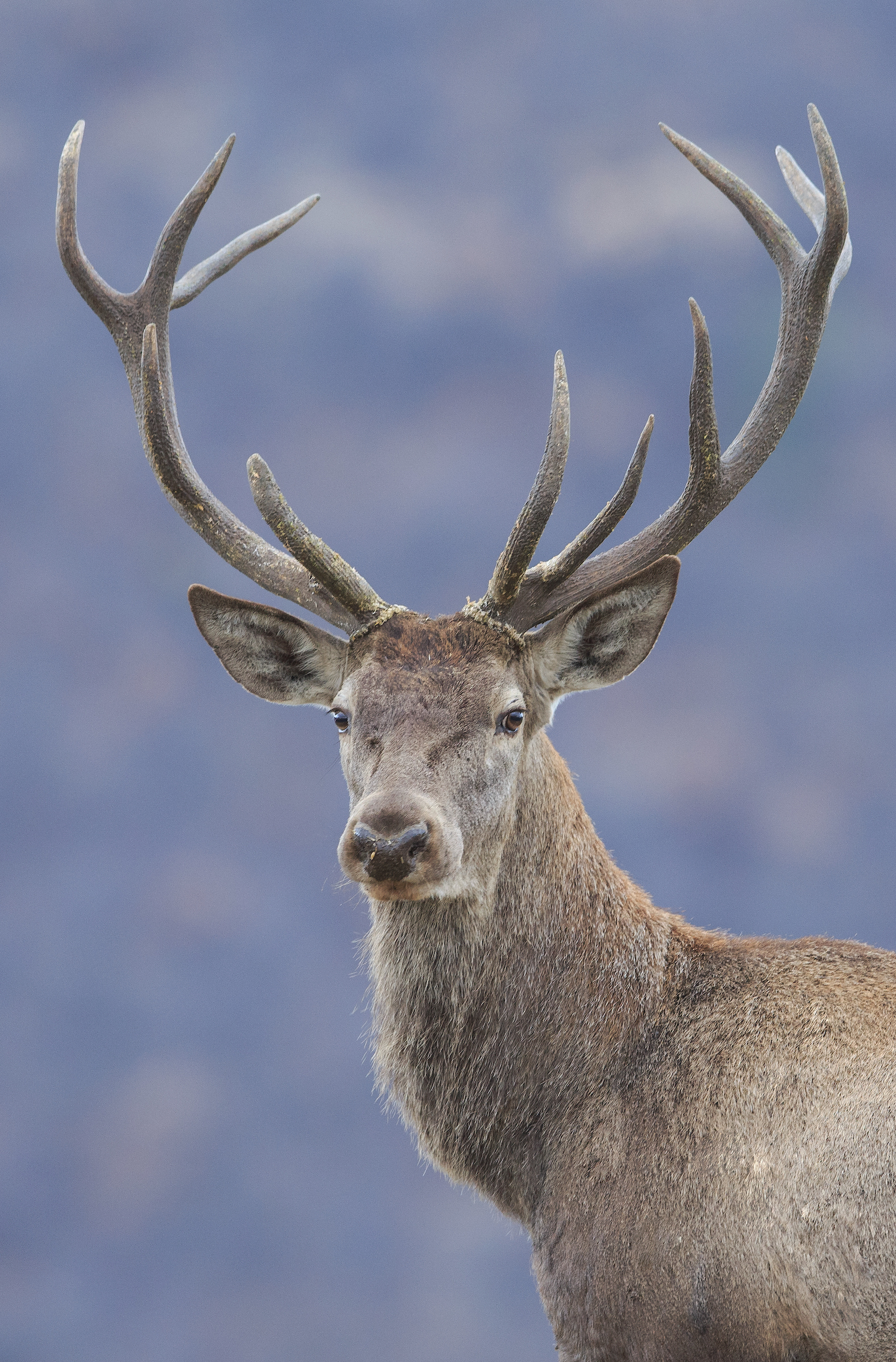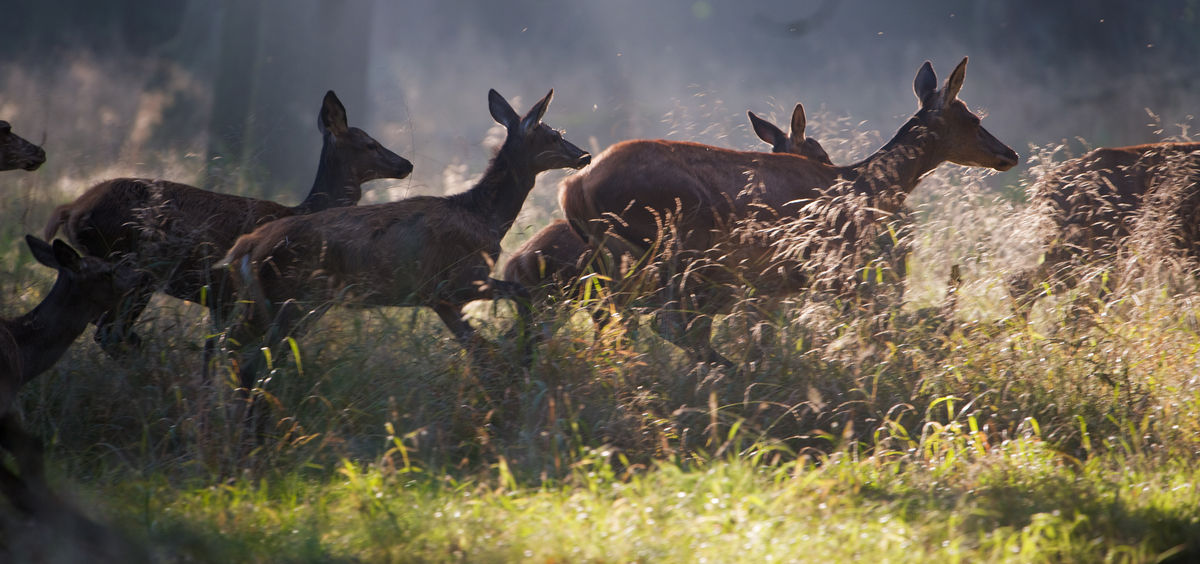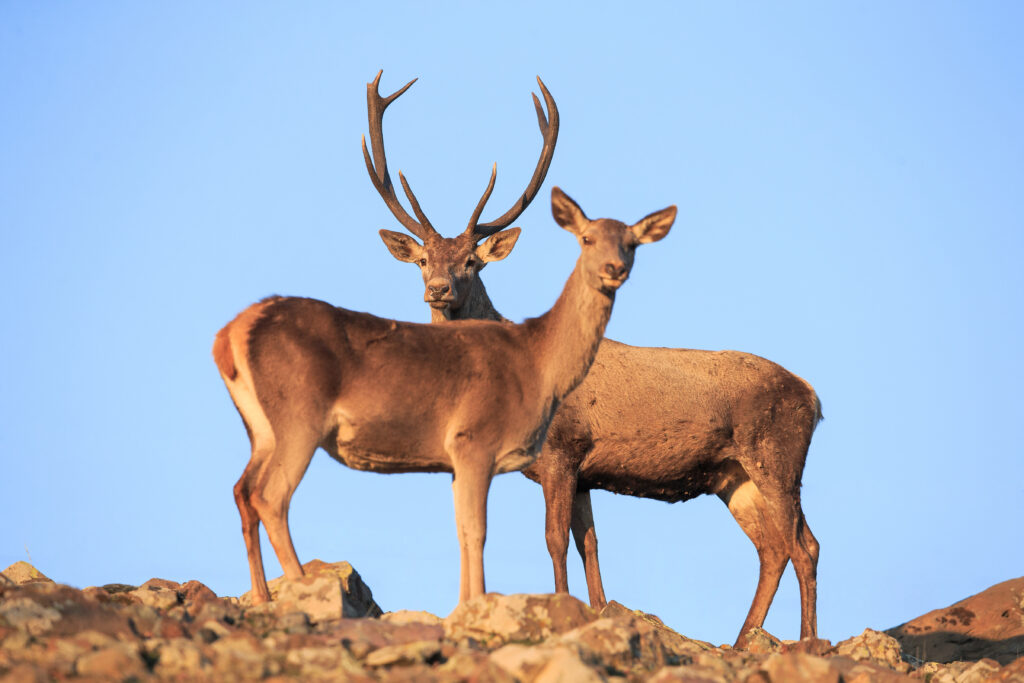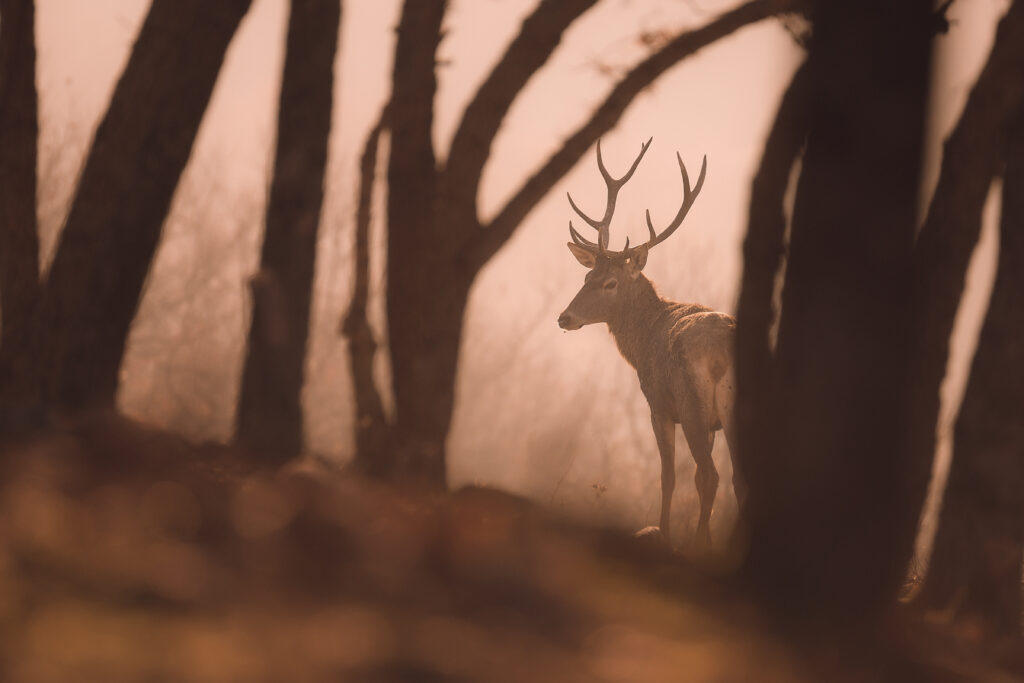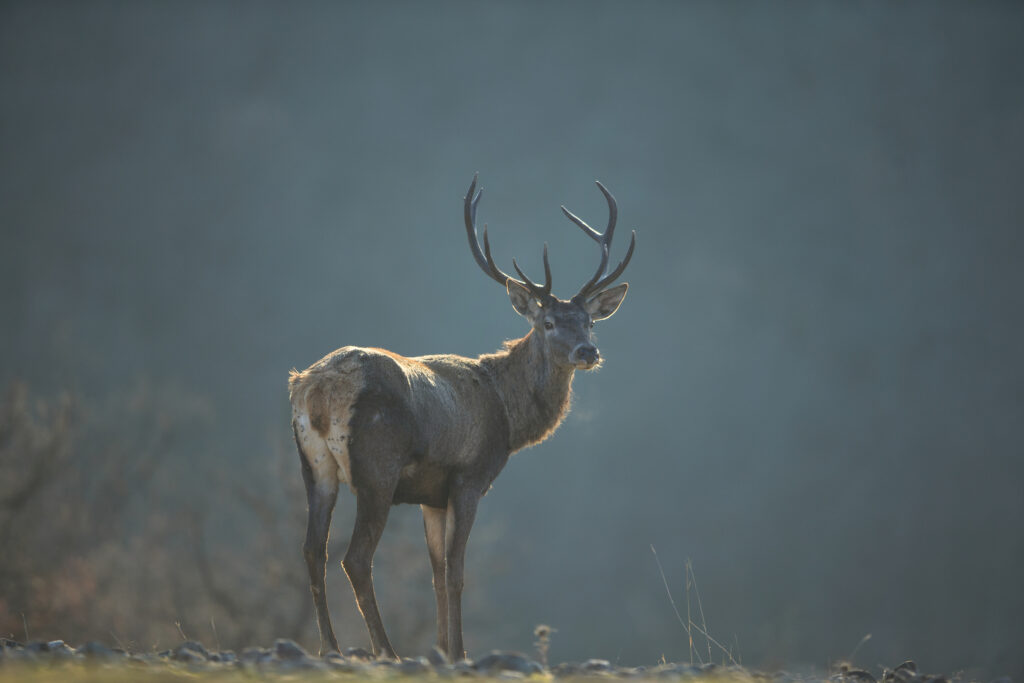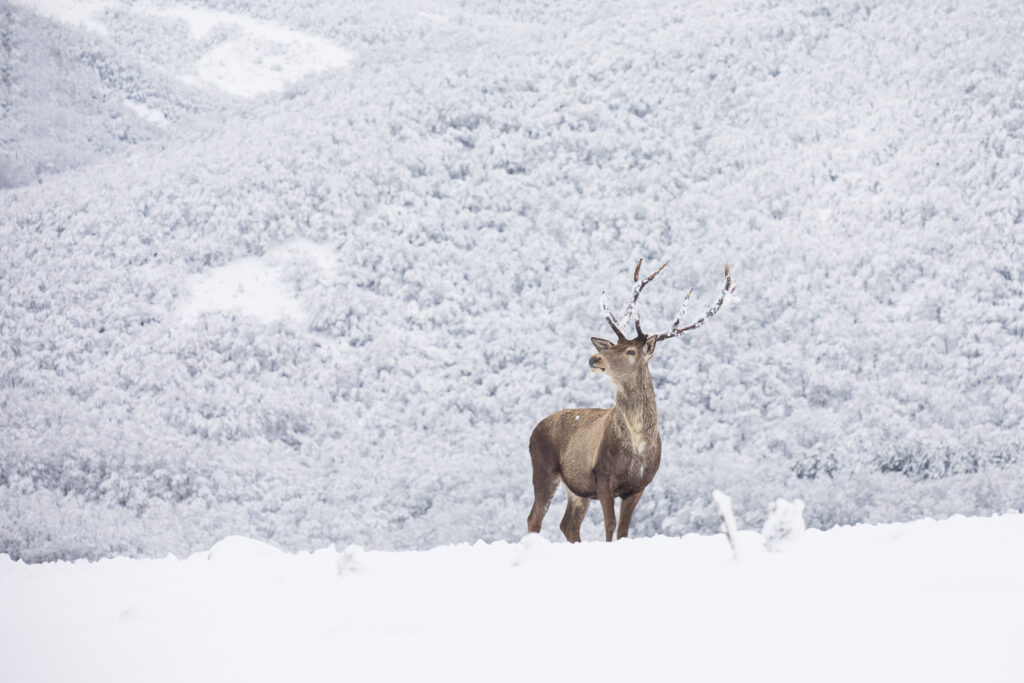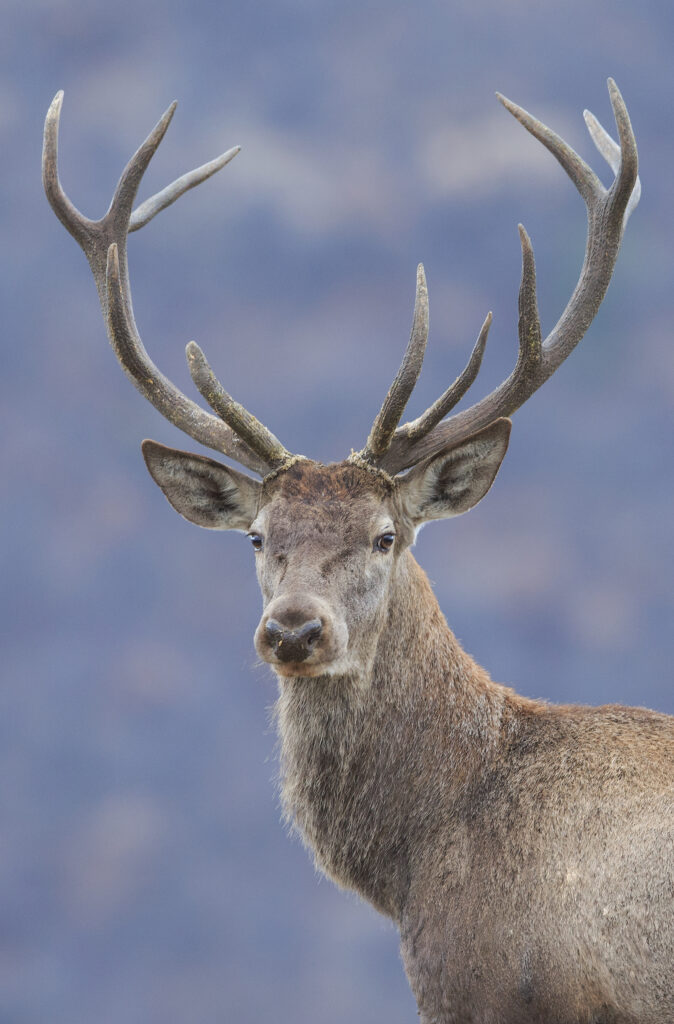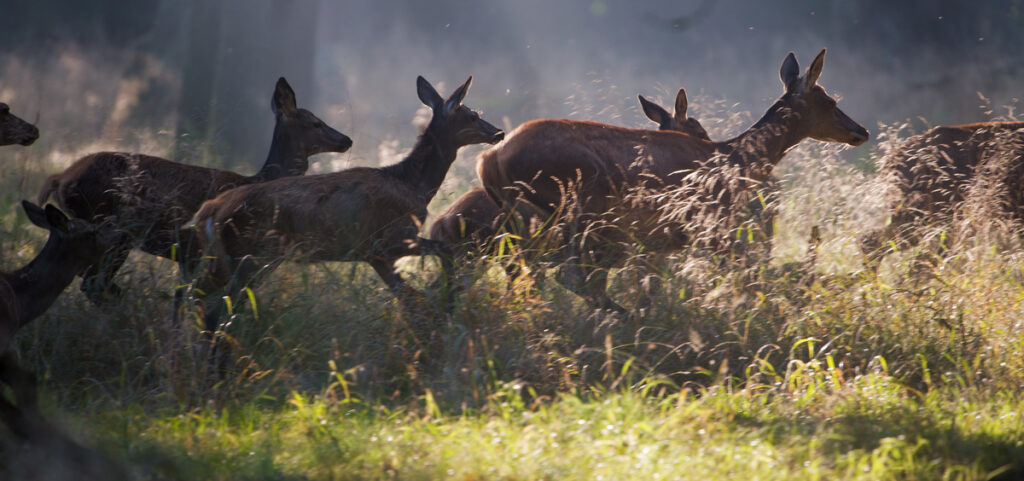Red deer
The red deer, along with the other wild ungulates, plays an important role in maintaining open forest spaces and pastures. Pastures attract multiple insects, amphibians, reptiles, birds, small mammals – an important link in the food chain for other species. On the other hand, large herbivores are a major food resource for predators and vultures. In this way, the reintroduction of the red deer plays an important role in the restoration and maintenance of the biodiversity as a whole in the Eastern Rhodopes.
The red deer is one of the characteristic wild animals to be found on paintings in ancient Thracian tombs. Unfortunately, in recent times it got almost extinct in our region as a result of poaching. Only a few dozen deer managed to escape extermination in border areas of Eastern and Western Rhodope mountains and in the state hunting reserve „Zhenda“.The Rhodope Mountains rewilding team regularly visits t and monitors release sites to prevent poaching, although we have witnessed several instances of illegal hunting already.
The red deer is one of the largest deer species. It inhabits most of Europe, the Caucasus Mountains region, Asia Minor, parts of western Asia, and central Asia and the Atlas mountains in Africa.
It is an even-toed ruminant like camel, goat and cattle. There are subtle differences in appearance between the various subspecies of red deer across Europe, primarily in size and antlers. Size varies in different subspecies with the largest, the huge but small-antlered deer of the Carpathian mountains, weighing up to 500 kg. At the other end of the scale, the Corsican red deer weighs about 80 to 100 kg, although red deer in poor habitats can weigh as little as 53 to 112 kg. Female red deer are much smaller than their male counterparts.
European red deer tend to be reddish-brown in their summer coats. During the autumn, red deer grows a thicker coat of hair which helps to insulate them during the winter. Autumn is the mating season and the red deer rut is a very spectacular event. The stags grow their neck manes and the antlers are fully developed. The powerful males collect a harem and fight with competitor males. Loud burling and antler fights are very impressive.
Undoubtedly, one of the most impressive and distinctive features of the red deer are the аntlers. Only the stags have antlers, which start growing in the spring and are shed each year, usually at the end of winter. Antlers typically measure 71 cm in total length and weigh 1 kg although large ones can grow to 115 cm and weigh 5 kg Antlers, which are made of bone, can grow at a rate of 2.5 cm a day. A soft covering known as velvet helps to protect newly forming antlers in the spring. The velvet which is covered with a skin made of multiple blood vessels provides oxygen and nutrients to the growing bone. The antlers are testosterone-driven and as the stag’s testosterone levels drop in the autumn, the velvet is shed and the antlers stop growing. With the approach of autumn, the antlers begin to calcify and the stags’ testosterone production builds for the approaching rut (mating season). Maximum antler size is reached around 10 year age. When the animal becomes older, the antlers get reduced size.
Main part of the year the animals live in small uni-sex herds composed only of males or females. The sexes only mix in the mating season. In mountainous areas red deer generally spend their winters at lower altitudes, in more wooded terrain. This also works fine as anti-predator behavior. During the summer, they migrate to higher elevations where food supplies are greater and better for the calving season.
Introducing small groups of animals over successive years is proving a good way to establish viable red and fallow deer populations. The 10-year aim of this reintroduction is to establish a new population of at least 100 free living red deer in this part of the Eastern Rhodopes.
Vidoe (subtitles available in Bulgarian only)
